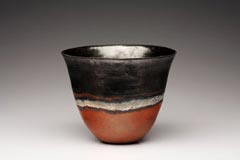The kings of the land of Kush
In the south, where the territories of the land of
Yam lay
- the destination of Harkhuf's expeditions - in the mid-3 rd millennium
there developed a confederation of tribal groups under one ruler. Probably
the Fourth Cataract marked the southern boundary of this first kingdom,
Kush in
Egyptian sources, while in the north the sway of the kings of Kerma
included lands beyond the reach of Egyptian frontier fortresses.
The first capital

The main administrative and religious centre of the country,
Kerma, was already a city in the full sense of the word. The remains
of the palace buildings decorated in the Egyptian style indicate that
the city was the seat of the ruling family as well. The characteristic
elements of Kerma's landscape are huge brick cult buildings -
deffufas -
(a Nubian term denoting massive brick constructions with small corridors
inside). A full reconstruction of the oldest Sudanese city is very
difficult, since ca 1500 BC it was taken and totally destroyed by the
Egyptian army.
Near Kerma immense burial grounds with stone-covered barrows have been
localized. The biggest contained burials of rulers whose last way was
accompanied by tens of ritually murdered slaves. The Kermans covered
their dead with animal skins; close to the graves whole animals or their
skulls were often buried as well. The Kerman grave pottery of the time
had reached the peak of artistic development.

